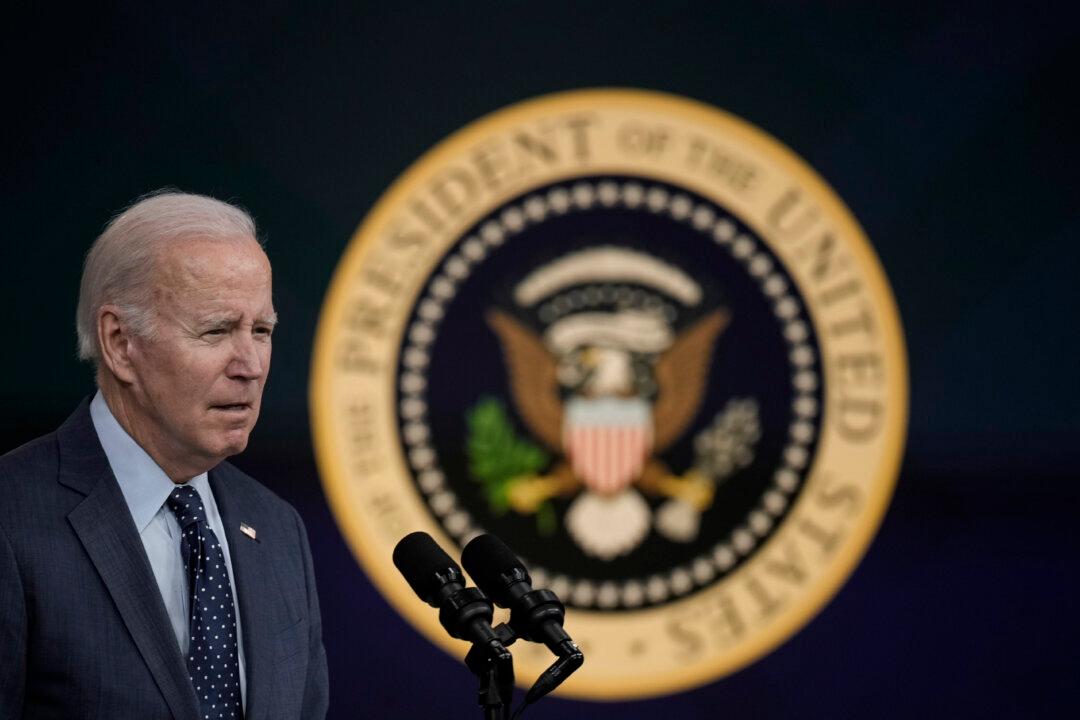Massive government stimulus bills have led to GDP contraction, not growth.
But the debacles continue to pile up on the “adults in charge”: the Afghanistan withdrawal fiasco, failure to deter Russia’s invasion of Ukraine, astronomically high gasoline prices directly resulting from cutting U.S. oil and gas production, massive supply chain problems, and soaring inflation.
The worst may be yet to come from the “adults in charge,” as the Commerce Department reported on April 28 that gross domestic product (GDP) had shrunk 1.4 percent in the first quarter of this year. This, after most analysts had predicted 1 percent growth. The Biden crew waited until the last days of the quarter to spring this bad news, which had to have been known and predicted much earlier!
The Biden Economic Team
The Biden economic team consists of the Council of Economic Advisers (Cecilia Elena Rouse, Jared Bernstein, and Heather Boushey), Commerce Secretary Gina Raimondo, Treasury Secretary Janet Yellen, U.S. Trade Representative Katherine Tai, and Office of Management and Budget Director Shalanda Young (acting).
Rouse is a labor economist focused on the economics of education and equality. She was previously the dean of the Princeton School of Public and International Affairs and served as a member of former President Barack Obama’s Council of Economic Advisers.
Bernstein previously served as the chief economist to Biden in the first years of the Obama administration. He was also deputy chief economist for the Department of Labor under former President Bill Clinton’s labor secretary, Robert Reich.
Boushey is an economist focused on “economic inequality” as the CEO of the Washington Center for Equitable Growth. She was also the chief economist for Hillary Clinton’s 2016 transition team and was an economist for the left-wing Center for American Progress.
Raimondo is the former governor of Rhode Island with a background in the finance industry, having co-founded her own venture capital firm, Point Judith Capital.
Yellen has a long career in academia and the federal government: professor emeritus of the Haas School of Business at the University of California (Berkeley), chairman of Bill Clinton’s Council of Economic Advisers during his second term, and chair of the Federal Reserve (nominated by Obama in 2014).
Tai is an attorney who clerked for U.S. District Courts in Washington and Maryland. She previously served in the U.S. Trade Representative’s Office of General Counsel during most of the Obama administration, and was chief trade counsel on the House Ways and Means Committee during the negotiation of the U.S.-Mexico-Canada agreement, focusing on its labor provisions.
Young has been in government service for over 20 years, having served as a staffer and then director for the House Committee on Appropriations before spending the last few years at the Office of Management and Budget as deputy director and now director.
The American Rescue Plan (aka American Recovery Plan)
Biden campaigned on grandiose claims to “build back better” (a phrase borrowed from globalists as described here).That grand scheme translated into three primary stimulus bills targeted at Democrat political priorities: the $1.9 trillion American Rescue Plan Act (ARP), the $1.2 trillion Infrastructure Investment and Jobs Act, and the $3.5 trillion Build Back Better Bill (now reduced to “only” $2 trillion and Democrats hope that it can be passed by the Senate).

All of these bills represent the culmination of years of congressional staff work in collating Democrat priorities with the assistance of left-wing nonprofit organizations such as the Brookings Institution. For example, Green New Deal spending priorities are replete in the infrastructure bill.
Her speech was all about government interventions and stimuli while providing insight into the Biden administration’s political and economic priorities. Here she was on April 27, crediting that the American Rescue Plan enacted in early 2021 was “igniting a robust recovery.” Surely, she knew about the bad numbers that would be reported by the Commerce Department the very next day!

- The importance of equity. This is the latest Marxist-Democrat euphemism: equity can only be achieved through the force of government.
- The use of “effective economic stabilizers.” This is Democrat-speak for the government programs that “are the automatic increases in revenues and decreases in outlays in the federal budget that occur when the economy strengthens, and the opposite changes that occur when the economy weakens,” according to the Hamilton Project. Examples include taxes, unemployment insurance, Medicaid, and the Supplemental Nutrition Assistance Program.
- The “attachment to the labor force.” This is gobbledygook about government training programs for the long-term unemployed (which are ineffective). Yellen was speaking to a friendly audience, as Brookings supports government training programs.
- The support for “basic human needs.” Who knew that government welfare (public housing, health care, and nutrition) was a key part of “build back better”?
- The “need to invest in measurement, oversight, and accountability.” Yes, yes, we need more rules, regulations, and reporting requirements so that the government can monitor and distribute their largesse more “effectively.”
The Results
From the above discussion, it should be crystal clear that the adults are clearly in charge and America is in good hands, right?Absolutely not!
The receipts are in on how that $3.1 trillion in Democrat-initiated government stimulus has worked out.
Conclusion
The Democrats continually tout their supposed competence in running the government. However, the economic chickens are coming home to roost for “Bidenomics.” The Biden economic plan of massive federal stimulus bills and an increase in taxes and regulations on businesses was a predictable recipe for the unfolding stagflation in the United States.Is this all that the “adults in charge” have to offer? Doing more of the same will only pour fuel on the stagflation dumpster fire that is well underway.





